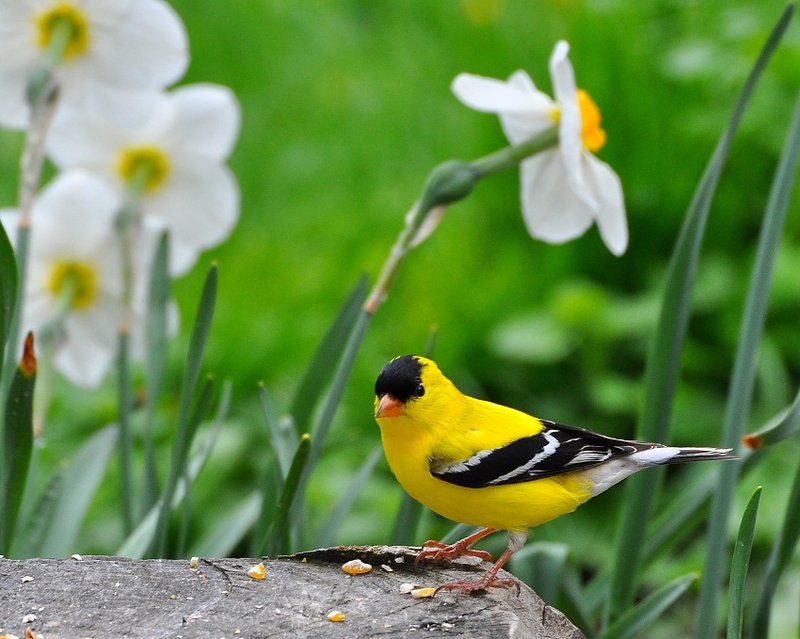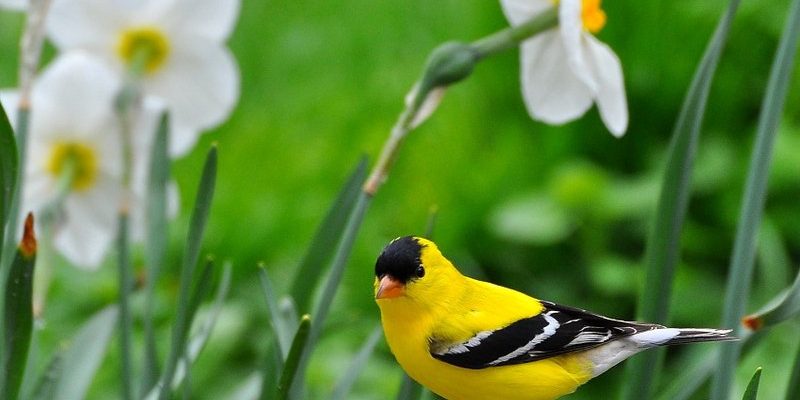
Imagine you’re walking through a sunlit meadow or a lush garden; you hear a sweet, melodious sound that seems to float in the air. It’s enchanting, right? That might just be a canary saying hello. In this guide, we’ll dive into the specifics of identifying these lovely little birds, from recognizing their songs to understanding their habitats. So grab your binoculars, and let’s embark on this adventure together!
Understanding the Canary’s Appearance
Canaries are known for their striking yellow feathers, but they actually come in various colors including orange, white, and even green. To really know your canary, it’s all about the details. Male canaries are typically brighter than females, boasting more vivid colors to attract potential mates.
When looking for canaries in the wild, pay attention to their size and shape. Adult canaries are about 4 to 5 inches long, similar in size to a small sparrow. They have a short tail, a rounded body, and a small beak perfect for cracking seeds. Their cheerful color and charming appearance make them stand out, but they can be easily confused with other small birds like finches or warblers.
Besides their colors, canaries have distinct markings that can help you identify them. Look for the bright yellow on their underparts, while their wings might show darker shades. When they flutter, the difference can be quite striking!
Listening for the Canary’s Song
Now, let’s talk about what makes canaries really special: their songs. Canaries are famous for their beautiful melodies, and this is often the easiest way to identify them. If you hear a sweet, high-pitched trill, that’s likely a canary serenading the world.
Male canaries usually sing more frequently and melodically, especially during mating season. Their songs can be complex, filled with a variety of notes and rhythms. If you’re trying to catch a glimpse of one, pay attention to where that lovely tune is coming from. Canaries often sing from a high perch, making it easier to locate them.
Here’s a little tip: if you find a spot where you can hear their song, sit quietly for a moment. Canaries are drawn to the sounds of nature, and if they think you’re gone, they might come out to play!
Exploring Canary Habitats
Canaries thrive in different environments, and knowing where to look is key. In the wild, you might find them in gardens, orchards, and meadows. They love open spaces with plenty of vegetation for cover and places to nest.
When you set off on your birdwatching journey, look for canaries in areas that offer seeds and insects, their primary food sources. They can often be found in shrubs or low trees, especially during the spring and summer months when they are most active.
Remember that canaries prefer to stay near human habitation, so don’t be surprised if you spot one flitting around backyards or park areas. Their adaptable nature has allowed them to thrive in urban settings, so keep your eyes peeled!
Behavioral Traits of Canaries
Canaries are not just cute; they have some interesting behaviors that can help you identify them. One of their notable traits is their social nature. You’ll often see them in groups, chirping and fluttering about together. This gregarious behavior helps them stay alert for predators.
If you notice a group of small birds engaging in playful feeding or chasing each other, there’s a good chance canaries are among them. They’ve got a lively personality that shines through, especially when they’re happy or excited.
Another behavior to look for is their distinctive flight pattern. Canaries tend to flutter quickly, with a series of short, rapid bursts. Sometimes they will briefly hover before landing, which can be quite charming to watch.
Photography Tips for Capturing Canaries
If you’re eager to document your canary sightings, here are a few photography tips to help you capture these beautiful moments. First, patience is key. Canaries can be skittish, so you’ll need to stay quiet and still to catch them at their best.
Consider using a zoom lens—something that allows you to get close-up shots without disturbing them. Focus on the bird’s bright colors and intricate feather details. You might also want to experiment with natural light. Early morning or late afternoon are ideal times for softer, warmer tones.
Lastly, don’t forget to capture their surroundings! A canary perched among colorful flowers can create a stunning image that showcases both the bird and its habitat.
Canaries vs. Other Small Birds
If you’re out in the field, you might run into other small birds that look similar to canaries. It’s important to know how to tell them apart. Goldfinches, for example, are often confused with canaries due to their yellow plumage. However, goldfinches have a more slender body and pointed wings, and they often have black head markings.
Siskins are another contender. They also share a similar size and color but have distinct streaks on their wings and a slightly different song. Observing their behavior and habitat preferences can also help you make the right identification.
You may find that taking notes or using a birdwatching app can be useful in distinguishing between these species. It’s all part of the adventure of birdwatching!
Identifying a canary in the wild is a rewarding experience that connects us to nature in a unique way. By paying attention to their appearance, songs, habitats, and behaviors, you’ll be well on your way to spotting these cheerful birds on your next outdoor outing.
Remember to embrace the quiet moments and enjoy the beauty of your surroundings. With a little patience and practice, you’ll soon be able to recognize canaries and maybe even share your newfound expertise with friends. So grab your binoculars, head out, and happy birdwatching!

